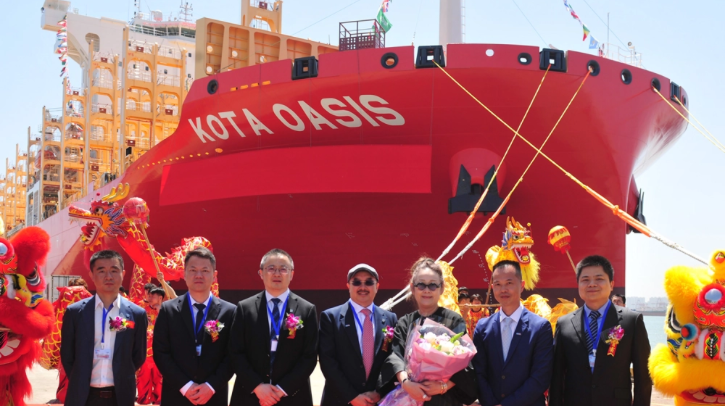The Kota Oasis – the first 8,200 TEU membrane-type LNG dual-fuel container ship built for Singapore’s Pacific International Lines (PIL) with Lloyd’s Register (LR) providing classification and certification services – has been delivered, and entered service at New Yangzi Shipbuilding.
Designing the vessel
The Kota Oasis was jointly developed by Shanghai Merchant Ship Design & Research Institute (SDARI) and New Yangzi Shipbuilding. This was the first collaboration between a private Chinese shipyard and LNG shipping specialist GTT.
With a total length of 260m and a container capacity of 8,350 TEU, the vessel is designed to operate on both regional feeder routes and deep-sea trades. It will be the lead vessel in the four-ship ‘O-class’ series of 8,200 TEU LNG dual-fuel container vessels.
Propulsion technology
Equipped with a Wärtsilä LNG supply system, the vessel’s dual-fuel propulsion system reduces carbon emissions by 20%, nitrogen oxides (NOx) by 85%, and sulfur oxides (SOx) by 99%, while its Energy Efficiency Design Index (EEDI) complies with Tier III requirements.
The main engine also integrates an intelligent control by exhaust recycling (iCER) system to minimize methane slip, and the generators are fitted with selective catalytic reduction (SCR) systems, ensuring compliance with IMO Tier III NOx standards.
The vessel features GTT Mark III membrane tank technology, and the fuel tanks have been certified to LR’s Ammonia-Ready class notation, futureproofing the vessel for ammonia fuel conversion.
At the vessel’s naming ceremony, Sau Weng Tang, LR’s president for Greater China, said, “The Kota Oasis represents a critical milestone in shipping’s decarbonization journey. LR’s rigorous surveys and technical collaboration have ensured that this vessel meets the highest international standards for safety and environmental performance.”
In related news, European Maritime Finance (EMF), in partnership with Atlas Maritime, recently sold the Electric Star, a dual-fuel LNG pure car truck carrier (PCTC) capable of carrying 7,000 cars. Click here to read the full story.



